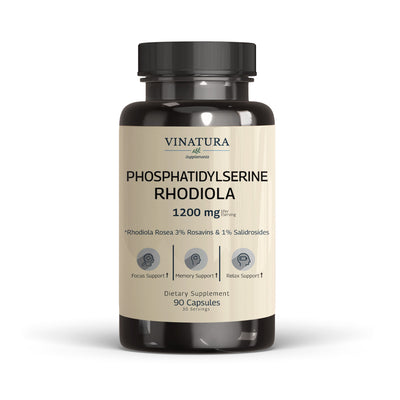
What Foods Have Curcumin? Ways to Supply Curcumin
Curcumin is a powerful bioactive compound best known for its anti-inflammatory and antioxidant effects—but it’s naturally found in only a few dietary sources, primarily turmeric root. While turmeric is widely used in cooking, curcumin’s absorption depends on how it’s prepared and consumed. This article explores the top food sources of curcumin, how to enhance its bioavailability, and modern supplement options to help you get the most out of this golden spice.
Before exploring further, please read the disclaimer located at the end of this webpage.
Key Takeaways
- Curcumin is primarily found in turmeric, especially yellow turmeric.
- Natural curcumin content in common foods is relatively low, and improper cooking methods can reduce its potency.
- Curcumin may help fight against inflammation, oxidative stress, improve digestion, and support brain health.
- In addition to food sources, curcumin supplements with enhanced bioavailability can be a more efficient alternative in certain cases.
What Foods and Drinks Contain Curcumin?
Essentially, curcumin is almost exclusively found in certain plants of the ginger family (Zingiberaceae), particularly in turmeric root. This makes it relatively rare in nature-based food sources. However, you can still introduce curcumin into your diet through the following:
- Turmeric root
- Mango ginger (Curcuma amada)
- Curry powder and curry-based dishes
- Golden turmeric milk
- Turmeric tea
- Turmeric powder
Other vegetables and food items generally do not contain curcumin unless they are seasoned or prepared using turmeric, turmeric powder, or curry blends.
Best Foods Are High in Curcumin
Turmeric

Unquestionably, turmeric is the richest natural source of curcumin. Scientific analyses show that dried yellow turmeric contains 3–5% curcuminoids by weight, with curcumin accounting for about 77% of the total curcuminoid content (Ammon et al., 1991).
However, curcumin’s natural bioavailability is quite low, meaning it is poorly absorbed into the bloodstream. This is why it's often consumed in combination with bioavailability enhancers like piperine, a compound found in black pepper.
In fact, many traditional recipes combine turmeric and black pepper not only for flavor but also based on nutritional synergy.
Read more:
- Turmeric Vs. Milk Thistle: Which Is Better for Liver Health?
- Turmeric Vs Curcumin: What Are Differences Between Them?
Mango Ginger

Despite its name, mango ginger (Curcuma amada) is not a true ginger but rather a close botanical relative of turmeric. Although its curcumin concentration is considerably lower than that of yellow turmeric, mango ginger stands out as one of the rare natural sources of curcumin.
This rhizome is found in the wild and is also featured in the culinary traditions of Southeast Asia, where environmental conditions are favorable for its growth.
Curry Powder and Dishes

Curry—a staple in Indian cuisine—is a well-known spice blend composed of several ingredients, one of which is turmeric powder.
Depending on the proportions used and the type of turmeric included, curry dishes may provide a small amount of curcumin. However, given the naturally low curcumin content and the heat-sensitive nature of the compound, the actual curcumin retained after cooking is generally quite limited.
Some Vegetables
As mentioned earlier, most leafy greens and vegetables contain virtually no curcumin. In other words, it is not feasible to obtain curcumin naturally from plant-based foods unless they are cooked with turmeric, turmeric powder, or curry.
Nevertheless, when vegetables are prepared with turmeric—such as in turmeric-based soups or stir-fried greens with turmeric—these dishes can offer a refreshing way to incorporate curcumin into your diet without monotony. Moreover, vegetables contribute additional nutrients and dietary fiber, enhancing overall nutritional balance.
What are the Benefits of Curcumin in Food?
Curcumin, the primary polyphenol in turmeric, has been the subject of hundreds of scientific studies due to its potent anti-inflammatory and antioxidant properties. Below are several key health benefits supported by current research:
Anti-inflammatory (Acute and Chronic)

Curcumin modulates inflammation by influencing key signaling molecules such as NF-κB, TNF-α, and COX-2, thereby activating anti-inflammatory responses to injury or cellular stress (He et al., 2015).
A review published in Biochemical Pharmacology (Aggarwal & Harikumar, 2009) demonstrated that curcumin may reduce inflammation as effectively as certain NSAIDs, but without the associated gastrointestinal side effects (Aggarwal et al., 2008) [3].
Antioxidant Protection
Curcumin is also widely recognized for its strong antioxidant capabilities. It neutralizes reactive oxygen species (ROS) and boosts the body’s endogenous antioxidant defenses by enhancing enzymes such as superoxide dismutase (SOD) and glutathione peroxidase.
According to Gupta et al. (2013), this function protects cells from oxidative stress—a key contributor to aging.
Liver and Digestive Support
Curcumin has also demonstrated benefits for liver function and digestion. Studies suggest it stimulates the gallbladder to secrete bile, aiding in digestion and alleviating symptoms of dyspepsia (indigestion) often associated with impaired liver function.
In a study where participants were administered 500 mg of curcumin daily for one week, significant improvements were observed in bloating symptoms and digestive efficiency (Lao, et al. 2006) [5].
Neuroprotection and Alzheimer's Prevention
Another significant potential of curcumin lies in its neuroprotective effects and its ability to support resistance against the onset of Alzheimer, particularly in the context of aging and progressive memory decline.
Specifically, curcumin can help inhibit the formation of amyloid-beta plaques—a hallmark factor associated with Alzheimer’s disease—highlighting its potential role in mitigating neurodegenerative processes.
This effect has been clearly demonstrated in several animal model studies [6]. However, further clinical trials in humans are required before curcumin can be definitively regarded as an effective compound in combating Alzheimer’s.
How to Use Turmeric - Best Source of Curcumin

As widely known, turmeric is one of the most potent natural sources of curcumin. However, the way turmeric is used significantly affects its absorption and the bioavailability of this powerful compound. Below are several effective methods to optimize the benefits of turmeric:
Using Fresh Turmeric
Peel and thinly slice or crush fresh turmeric root to use in stews, soups, detox smoothies, or teas. Fresh turmeric retains enzymes and heat-sensitive compounds that are often lost during drying, making it the best option for absorbing curcumin in its most natural form.
Note: Turmeric juice easily sticks and leaves yellow stains on the knife. If not rinsed immediately, the dried stains can be very difficult to remove.
Using Turmeric Powder
Although turmeric powder doesn’t contain as much curcumin as fresh turmeric, it is convenient and versatile. It can be added to culinary dishes or beverages like golden milk or turmeric water. Always choose pure turmeric powder made from high-quality roots, as the curcumin content depends heavily on the turmeric variety and processing method.
Combine with Black Pepper (Piperine)
Curcumin has low bioavailability due to rapid liver metabolism. Piperine, the active compound in black pepper, inhibits the enzymes responsible for curcumin breakdown, enhancing its absorption by up to 2000% (Shoba et al., 1998).
Use with Fats
Since curcumin is fat-soluble, consuming it with healthy fats like coconut oil, olive oil, or whole milk improves its intestinal absorption.
Supporting these points, a Quora user shared that to help the body absorb turmeric more effectively, it should be combined with black pepper, as the piperine in pepper can significantly enhance the bioavailability of curcumin.*
He also mentioned that since curcumin is fat-soluble, consuming turmeric with healthy fats like cooking oil, avocado, or milk would improve its absorption. When cooking, he suggested sautéing turmeric with oil and black pepper.*
For those taking turmeric capsules, he recommended choosing ones that include black pepper extract. One simple tip he offered was to mash turmeric with black pepper and avocado to enhance its absorption.*
Tips for Buying and Preparing Turmeric
Because the quality of turmeric plays a critical role in the effectiveness of curcumin, consider the following best practices:
- Choose High-Quality Turmeric: Fresh turmeric should have a rich golden skin, be firm to the touch, and have no off-putting odors. For curcumin-rich content, prioritize Curcuma longa (yellow turmeric) over white or black varieties.
- Use Pure Turmeric Powder: Pure turmeric powder has a deep yellow-orange hue and should be free of additives, flour, dyes, or preservatives. Check the label for a clearly stated curcumin percentage to ensure real potency.
- Store Properly: Keep turmeric or turmeric powder in a dry, dark place at a stable temperature. Avoid air and light exposure as curcumin is prone to oxidation.
- Cook Properly: Avoid high-temperature cooking for extended periods, which can degrade curcumin. Enhance recipes by adding healthy oils and black pepper to preserve and boost absorption.
Other Ways to Supply Curcumin
Beyond traditional culinary use, modern technology has enabled more efficient ways to deliver curcumin. Popular options on the market include:
Nano Curcumin
Nano-formulated curcumin boasts significantly higher concentrations compared to natural turmeric. However, this method is relatively costly and less accessible for the general population.
Curcumin Extracts
Although less common, turmeric extracts concentrate curcumin content up to 90–95% curcuminoids—compared to just 2–5% in fresh turmeric. These are primarily used in pharmaceutical and high-grade nutraceutical products.
Curcumin Supplements
A wide variety of capsules and tablets containing curcumin are now available, offering convenience, consistent dosing, and affordability.
When choosing high-quality curcumin supplements, it's important to look for products that:
- Use bioavailable forms of curcumin (such as curcumin with piperine, liposomal curcumin, or curcumin phytosome),
- Are third-party tested for purity and potency,
- And are produced by reputable brands that clearly label ingredients and manufacturing practices.
These factors help ensure better absorption and minimize the risk of additives or contaminants.
The effectiveness of these supplements is supported by positive user reviews on Amazon:
"I’ve been taking the black turmeric capsules for a month. They seem to be working OK. I’m using them for inflammation and boosting the immune system. So far, so good. I’d buy them again." — iolia*
"First time trying black turmeric. It seems to be working pretty good for joint aches and pains. A bit faster and lasts longer throughout the day. I don't know the difference in this type vs the regular type but it does seem to make a difference for me." — Mr. Rick*
Conclusion
To summarize, curcumin is an exceptional bioactive compound in turmeric with scientifically supported health benefits. However, its natural concentration in food sources is relatively low, and poor preparation or improper consumption can significantly limit its absorption. Therefore, while incorporating turmeric-rich foods into your diet is essential, using high-quality curcumin supplements may be a practical and effective strategy for supporting long-term health.
Testimonial Disclaimer
*The testimonials presented on this website are provided by individuals based on their personal experiences with our products. These testimonials represent individual opinions and experiences, which may not be typical or applicable to all users of our products. Results may vary depending on a variety of factors, including individual health, lifestyle, and adherence to product usage instructions.References
- [1] Ammon, Hermann, and Martin Wahl. “Pharmacology of Curcuma Longa.” Planta Medica, vol. 57, no. 01, Thieme Medical Publishers (Germany), Feb. 1991, pp. 1–7, https://doi.org/10.1055/s-2006-960004.
- [2] He, Yan, et al. “Curcumin, Inflammation, and Chronic Diseases: How Are They Linked?” Molecules, vol. 20, no. 5, MDPI AG, May 2015, pp. 9183–213, https://doi.org/10.3390/molecules20059183.
- [3] Aggarwal, Bharat B., and Kuzhuvelil B. Harikumar. “Potential Therapeutic Effects of Curcumin, the Anti-Inflammatory Agent, against Neurodegenerative, Cardiovascular, Pulmonary, Metabolic, Autoimmune and Neoplastic Diseases.” The International Journal of Biochemistry & Cell Biology, vol. 41, no. 1, Elsevier BV, July 2008, pp. 40–59, https://doi.org/10.1016/j.biocel.2008.06.010.
- [4] Gupta, Subash C., et al. “Therapeutic Roles of Curcumin: Lessons Learned from Clinical Trials.” The AAPS Journal, vol. 15, no. 1, Springer Science and Business Media LLC, Nov. 2012, pp. 195–218, https://doi.org/10.1208/s12248-012-9432-8.
- [5] Lao, Christopher D., et al. “Dose Escalation of a Curcuminoid Formulation.” BMC Complementary and Alternative Medicine, vol. 6, no. 1, BioMed Central, Mar. 2006, https://doi.org/10.1186/1472-6882-6-10.
- [6] Mishra, Shrikant, and Kalpana Palanivelu. “The Effect of Curcumin (Turmeric) on Alzheimer’s Disease: An Overview.” Annals of Indian Academy of Neurology, vol. 11, no. 1, Medknow, Jan. 2008, pp. 13–13, https://doi.org/10.4103/0972-2327.40220.
- [7] Guido Shoba, et al. “Influence of Piperine on the Pharmacokinetics of Curcumin in Animals and Human Volunteers.” Planta Medica, vol. 64, no. 04, Thieme Medical Publishers (Germany), May 1998, pp. 353–56, https://doi.org/10.1055/s-2006-957450.
Author

Product Disclaimer
Including an ingredient or study does not evaluate, endorse, or recommend any Vinatura product or any third-party product. Some ingredients discussed may not be used in any Vinatura product.
The content of the articles has not been evaluated by the Food and Drug Administration (FDA) and is not intended to promote or endorse any specific product. Any products sold on this website are not intended to diagnose, treat, cure, or prevent any disease.
Opinions and Endorsements
Any claims, statements, or opinions expressed in the articles are those of the author(s) and do not necessarily reflect the views or opinions of the manufacturers of the dietary supplement products. The products sold on this website are separate from the content of the articles and are not directly endorsed or associated with the information presented here.
Liability Disclaimer
The author(s) of the articles, website, and manufacturers of the dietary supplement products do not assume any liability for any potential consequences arising from the use of the information provided in the articles. Ingredient effects, dosages, and safety vary by individual, formulation, and context; some ingredients interact with medications or may be unsuitable during pregnancy or lactation. It is recommended that individuals consult with a qualified healthcare professional before making any dietary or lifestyle changes, including the use of dietary supplements.
Product Usage
Please refer to the product labels and packaging for specific usage instructions and guidelines for the dietary supplement products sold on this website.
Customer Support
For any concerns or questions regarding the dietary supplement products, please contact our customer support team, who will be more than happy to assist you.





Leave a Comment
Be the first to comment.
What do you think?